

The Montessori math curriculum is one of the best examples of the unique beauty of Montessori materials. First, the Montessori practical life and sensorial activities give indirect preparations for math. Then the math materials continue to prepare the child for later learning. They use concrete materials to introduce abstract concepts and give a sequential understanding of mathematical concepts.
The acquisition of mathematical principles is seen as developing logically from concrete to abstract, and from simple to complex. Montessori math includes the development of concepts such as numeration, place value, fractions and the basic operations of addition, subtraction, multiplication and division using numbers up to 9999.
Montessori math materials are nothing short of amazing. While they look quite different than what we used growing up (pencil and paper?) there are intentional reasons for these methods. Read on to learn more...
Much of the Montessori curriculum is based on giving children exposure to concrete materials first, then giving them incremental opportunities to work on more abstract concepts. This is no different when it comes to math.
The children are able to hold a material in their hands. The materials are symbolic or representative of something else (a number, perhaps), and that symbolism changes over time until children are ready to let go of the materials and find solutions on paper or even in their heads. This idea of mastering a skill without the assistance of materials is what we refer to as abstraction.

At the primary level math starts out simple, but you may be surprised at how much pre-schoolers are capable of. Even before a child is able to count, they experience the skill using materials like the number rods, a series of blue and red coloured wooden rods that are arranged in a stair-like pattern. Children learn how to count using a variety of materials. The spindle box is an early material with which children place the correct amount of wooden spindles in compartments labelled 1-9. Sandpaper numbers (just like their letter counterparts!) teach children how to correctly form each number to develop readiness for writing them on paper.


When a child is ready to learn about basic operations, there are plenty of materials to support them. Montessori math uses the golden bead material; first to build numbers into the thousands.
Once a child is able to build a visual representation of a number, the beads are used to teach basic operations. Young children are able to add, subtract, multiply, and divide numbers into thousands using this material. They first learn with static problems - that is, with no exchanges - and then move on to more complex, dynamic problems. They quickly learn that ten 1s is equal to one 10, and they do this by holding those numbers in their hands.
Montessori recognizes the importance of memorizing basic facts. While when we were young we may have used flashcards to drill these facts into our heads, the Montessori approach begins by showing children why we manipulate numbers in different ways. Young children appreciate the repetitive nature of the materials, which gives them plenty of opportunities to practice (and memorize!) these facts. The addition and subtraction strip boards show a child visually what is happening when we add numbers. The same goes for the multiplication and division bead boards (which use small beads placed in divots on a wooden board to create an array).
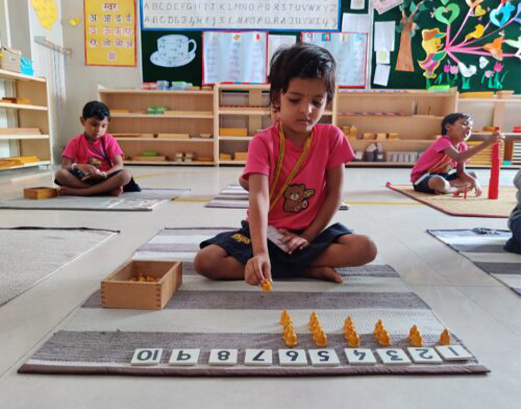
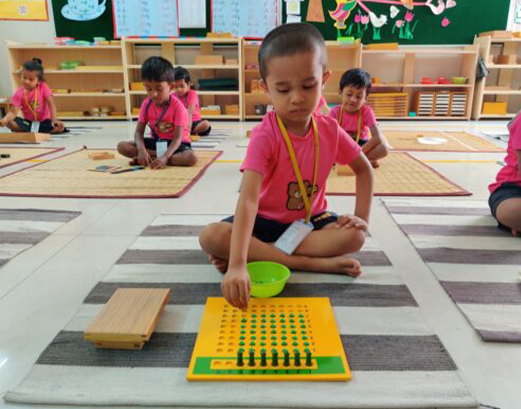
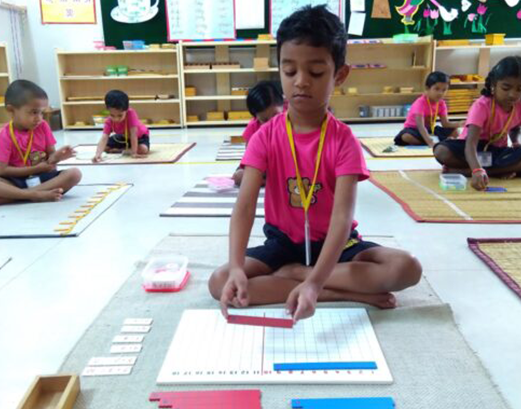
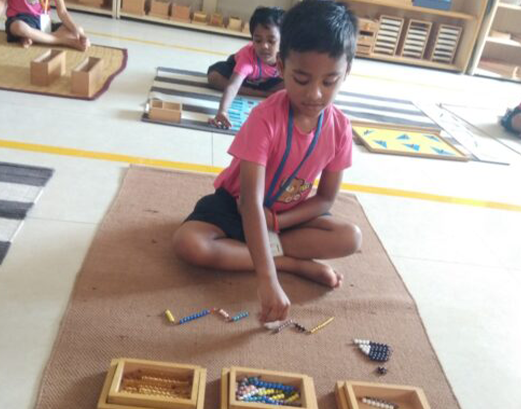
Somewhere between the age of five and five and a half, children are taught to use new math materials depending upon their individual readiness. The stamp game is a classic example.
Instead of holding a large cube that actually shows the relative size of one thousand as they did with the golden beads, they are now representing a series of tiles that are all the same size, but are differentiated only by their color and number label. Like the golden beads, the stamp game material is used to teach all four operations, with children adding, subtracting, multiplying, and dividing into the thousands.
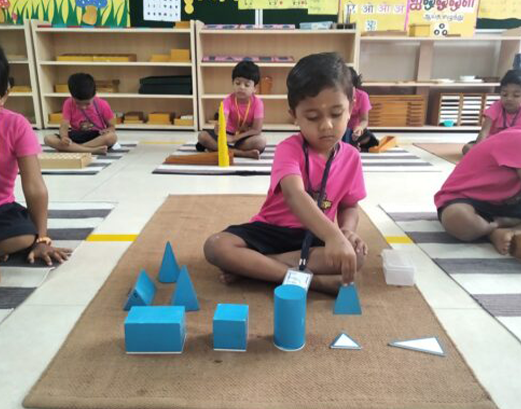
Of course, math isn’t just about operations. Montessori students learn about geometry and fractions from an early age.
They can easily identify not just cubes and spheres, but square-based pyramids, rectangular prisms, ellipsoids, and more.
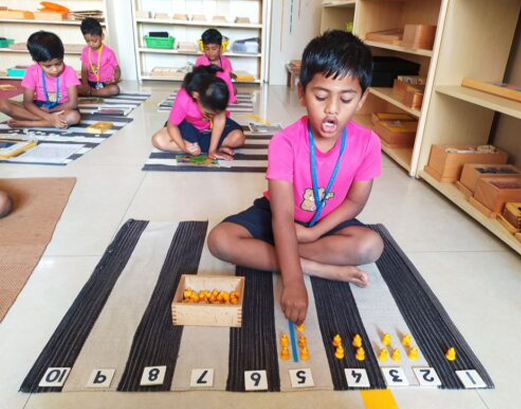
The best way to really understand Montessori math is to see the materials in action. Schedule a visit to watch children using them in the classroom. Contact us for more details!
2023 senthil public school dharmapuri. all rights reserved. designed by aatmia.